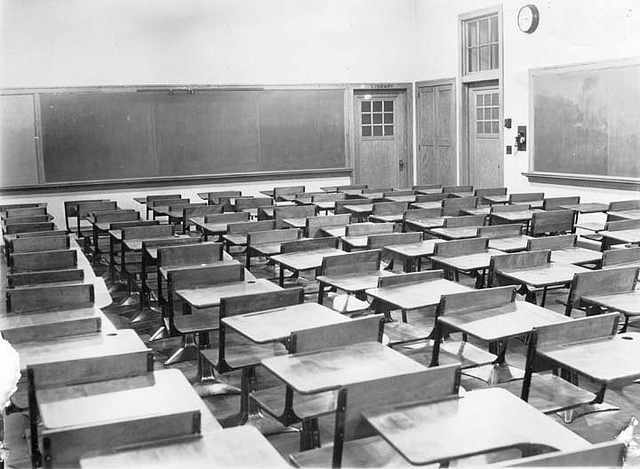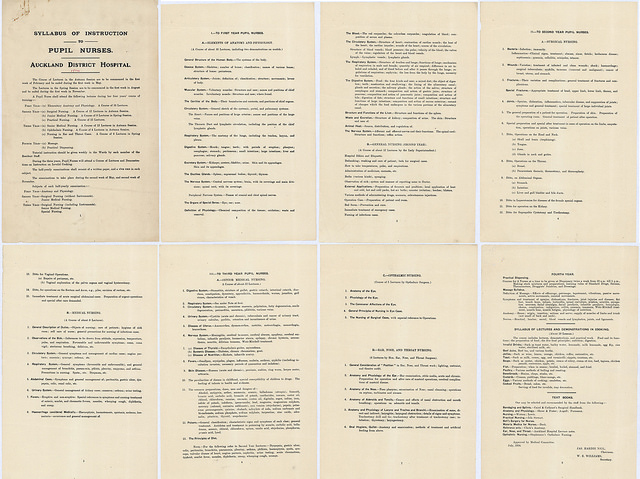One of my undergraduate professors once told me that professors are often asked to teach outside of their areas. I really did not understand what she meant. Surely, every teacher is teaching a text that they have read a million times and taught several times too?

I realize that as an undergraduate I had no idea what went into teaching and planning courses let alone the administrative decisions about what courses to put on the schedule. Now, I almost exclusively teach outside of my area—if I count my area strictly as nineteenth-century American literature. I have taught literature from all over the globe, from many time periods, and in various class levels. Some of this has been because of the courses available to me to teach and a lot of it has also been at my own doing. I taught my Introduction to Literature students August Wilson because of the goals of the class and because I thought they would connect to the play. While I will be happy to teach a nineteenth-century women novelists class, if any of you want me to, I am also enjoying the challenge of pushing myself to teach and read new books.
This does not mean that when preparing these texts I don’t end up kicking myself a little bit because it is more work to teach outside of my area. Sometimes you find yourself in an “eyes bigger than your stomach” situation where in a pre-semester rush of energy you fill your syllabus with exciting texts and then realize the hurdles you face when teaching a lot of new texts or a particularly challenging text.
Because I often teach literature from a historical/cultural perspective, a further impediment can be attempting to understand the background of a new text. I will, of course, read about a text beforehand, but I can’t replicate the depth of my knowledge about the U.S. in the 1800s for each new text/place/time period. (It took seven years to learn this much about American literature, and I am still spending most of my time discovering how little I know.) So, while background is important, it can’t be the only teaching perspective while preparing for many new texts.
When I feel at sea preparing to teach a text, I find that a few things help ground my exploration. These are not the only means by which I will teach a new text, but if I start with these elements, I find that I often root myself in the text enough that further teaching explorations can develop from there. In order to do this, I go back to basics and think about some of the earliest means by which I learned to do literary analysis.
As I begin to organize my thoughts around these categories, I also find opportunities to use these organizational structures to plan the lessons for the class. The way that I think about breaking down a text often leads directly into a lesson plan for that work.
Thematic Concerns
Themes! Themes are the most obvious place to start when thinking about how to teach a text. Even students who are not very comfortable in the literature classroom will most likely know how to identify themes. When marking a text to teach, I will note prominent themes in the text as I read. Then, when preparing to teach, it is easy to browse through the work to look for themes that stand out. This can be a good way to start organizing thoughts about the text as you are lesson planning.
Students can benefit just as much from this organization. In class, have students identify prominent themes in the text and write a list on the board. The class can then discuss each theme as a class or groups of students can work on one theme together and report back to the class about their themes. Also, you can have students find quotes that relate to important themes and use that to prompt class discussion or have them write about their reactions to the particular quotes related to the themes.

Character Development
Which character stands out to you in the text and why? I often like to think about the minor characters that are prominent in the text and consider what kinds of lessons I can build around them. Often minor characters can be a good way to discuss a theoretical or critical perspective that you want to introduce to students. For example, are the feminist characters at the periphery of the text? If so, can we use that to explore the role of women in the text or the reasons the author might structure the text in this manner?
For a longer work, it can be fruitful to assign specific characters to individual students. Ask the student to keep track of their character throughout the entire text and be ready to report on that character each day in class. Then in class, you can call on students as the discussion progresses. More formal assignments can also be structured around character development. Students can write a character analysis or can compare their character to a character from an earlier text.

Structure
It can help to think about structure when planning several classes on the same text. Where is the logical place to start and stop a discussion of a particular section? Thinking about how the story is built is also useful because this train of thought often leads us to the most academic of questions: why? And how? For instance, without even a particular text in mind I can easily generate a lot of questions related to structure:
- Why did the author place this scene here?
- Why does this chapter end in this manner?
- How are these events juxtaposed in the text?
- How does knowing/not knowing a piece of information complicate our understanding of the text?
- How does the complex structure of this work affect your reading/comprehension of it?
- How does the rather straight forward plot of a work function in relation to the other elements in the text? Does the straightforward plot highlight another part of the work?
Asking questions about structure to your students also lets you check in with their understanding of the text. If you ask them about a particular time or setting shift in the text, and they didn’t notice or didn’t understand what was happening this can be a good indication that the lesson needs to slow down and make sure everyone is on the same page.
Additionally, it is almost always fruitful to ask about the beginning of a text or the ending of the text. I still remember doing this in class for both Pride and Prejudice and Their Eyes Were Watching God as an undergraduate myself. And of course, students often like to reassess the beginning of a text once everyone has read it in its entirety.
Structure, character, and themes are pretty basic ways to get into a text, but they are productive means for you and your students to begin an interrogation of a text. This post is for the beginning of the semester, since it covers preparatory lesson planning, but I also think I will be returning to these thoughts mid-semester, when it is actually time to teach the texts I am placing on my syllabus now. What are your best practices for adding new texts to syllabi? How do you begin to plan individual and sequenced lessons?
One thought on “Syllabus & Lesson Planning: Back to Basics When Teaching New Texts”